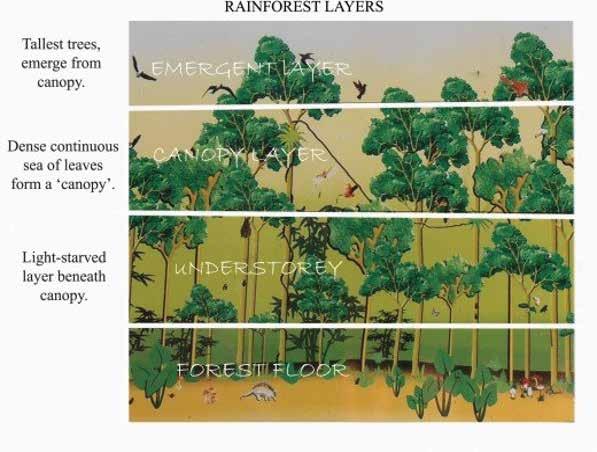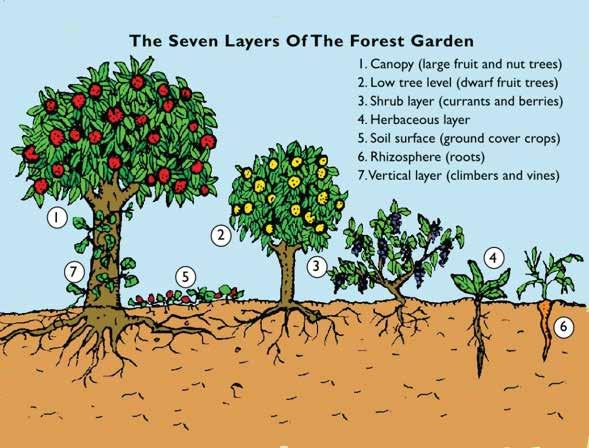
13 minute read
My Mission In Myanmar
by Wayne Harray
The by-line on my LinkedIn profile says:
“Boldly Going Where Few Kiwis Have Flown Before”.
This raises a number of questions - namely:
What is a Kiwi? Do they actually fly? Where are you going? Why are you going?
A kiwi, with a small ‘k’, is a flightless, furry, brown bird about the size of a chicken which is native to New Zealand. On the other hand, a Kiwi, with a large ‘K’, is a New Zealander.
A Kiwi gets his (or her) nickname from the kiwi, and New Zealanders have been called Kiwi’s for over 100 years when New Zealand soldiers in the First World War wore badges with pictures of kiwis stamped on them.
Neither kiwis or Kiwis are able to naturally fly, so how was I able to fly to where I was going? By aeroplane, or course!
And where was I going? To Myanmar, or to be more specific, to the Tahan Theological College (TTC) based in the Kalay township.
And why? Well - that’s a long story, so here is the short version.
In 2014, Helen and I decided to take a trip to visit friends and family in various parts of the world in the second half of 2015. Our good friend Anna Sui Hluan and her husband Henry van Thio attended our church in New Zealand and they, knowing that they were going to be returning to Myanmar, invited us to visit them at the end of our trip. So...
...in November 2015, we did. Most of our time was spent in either Yangon and Hakha (capital of the Chin State), but we did have a day to spare in Kalay, so visited TTC. We only spent an hour there, and the principal, as we were leaving, made the comment that the college had 15 acres of land that they didn’t know what to do with. By trade, I’m a dairy farmer, so that was a silly thing to say to a farmer.
In 2016, we made enquiries with the PCANZ mission secretary about possibilities of working in Myanmar. He conferred with the PCM who said they would still like someone to develop the farm. CWM was consulted and they indicated they would be interested in funding the project.
In 2017, we returned to Myanmar to get a better understanding of what the project would involve, and to see if we felt we could actually live here. Obviously we did feel we had something to contribute, and could cope with the climate, the mosquitoes, the food and everything else that comes with living in a foreign country. So....
...in July 2018, we returned once more, this time for an initial three-year period with the option, if everyone is happy, for extending that for up to a further 6 years.
My mission is straight forward. The college requires me to:
Make a profit off the farm Create a farming environment that can be used as a model and demonstration farm for both the students and others in the local community Grow food for the students.
I have to confess that when I first saw the property in 2015, I arrogantly thought to myself that I would show these people how to farm using New Zealand farming methods. I apologise for those attitudes. In 2015, I only knew about contemporary farming methods, using chemical fertilisers, weedicides and pesticides.
In 2017, I had an interview with the Minister of Agriculture for the Chin State, who said that he wanted to see more organic farming methods utilised in his state. Because many of the TTC students were from the Chin State, and were likely to return there after their studies, how could I, who only knew about farming with chemicals, honour the wishes of the Chin government who wanted nothing to do with chemicals?
After a quick chat to Jesus, I decided I would have to change my thinking. So...my journey to learn about alternative farming methods started. On our trip in 2015, we had gone to a training course in Zimbabwe that focussed on farming without cultivation and using lots of mulch as ground cover. Unfortunately, they still used chemical fertilisers. That became my starting point. I then discovered the permaculture approach to agriculture, then restorative agriculture, then regenerative agriculture and am currently looking at syntropic farming.
All of these farming systems focus on returning the land to what ‘nature’ originally started with. You and I both know that ‘nature’ is actually God’s creation. In Genesis 1:11-13 (MSG) we read: God spoke: “Earth, green up! Grow all varieties of seed-bearing plants, Every sort of fruit-bearing tree.” And there it was. Earth produced green seed-bearing plants, all varieties, And fruit-bearing trees of all sorts. God saw that it was good.
And then in Genesis 1: 29-31 (MSG), we read:
²⁹-³⁰ Then God said, “I’ve given you every sort of seed-bearing plant on Earth And every kind of fruit-bearing tree, given them to you for food. To all animals and all birds, everything that moves and breathes, I give whatever grows out of the ground for food.” And there it was. ³¹ God looked over everything he had made; it was so good, so very good! It was evening, it was morning— Day Six.

Up until about 200 years ago, humans were actually pretty good at looking after God’s creation. Indeed, even today there are indigenous farmers in many countries who, untainted by western systems, are doing a very good job of caring for God’s creation. But, as farming has become more industrialised, and greed become more prevalent with land owners wanting more and more from their land, more and more of God’s trees have been cut down, and not replaced. With the manufacture of chemical fertilisers in the early 1900’s - especially nitrogen and phosphate based fertilisers and their ability to artificially boost the growth of crops and grasses, along with the use of chemical pesticides and weedicides, production increased significantly, and with it the amount of money going into the farmers pockets.
However, we are now seeing it is actually more and more difficult to sustain production. Anecdotally, we hear more and more stories of farmers leaving their land as it requires more and more artificial inputs, at a greater cost, to produce the same amount of produce. Indeed, this is true of our farm here in Tahan where the farmers who leased the land no longer believe that it is profitable to farm.
I ask you, the reader, to tell me why it takes more and more artificial inputs to maintain production. Or put another way, why does production fall when a farmer is putting on the exactly the same amount of fertiliser each year? I believe the answer is that the earth itself has been contributing to fertility, but is doing so less and less each year.
If one was to examine, under a microscope, the soil in the untouched forest - God’s creation, one would see millions and millions of microscopic living creatures, which all contribute to building up the soil fertility by consuming the dead leaf matter on the ground and then excreting it as natural fertiliser. Indeed, God’s creation needs no artificial inputs, yet produces an abundance of food. Everything is in perfect balance - the soil is fertile, plants grow, animals and birds feed on what grows, and humans, too, can feast on the plants and animals growing there.
However, if one was to examine, under a microscope, the soil that had been exposed to chemicals, one would see far, far less of those microscopic living creatures. Which really is not so surprising, because all the chemicals we have applied to kill weeds and other pests have killed the micro-organisms as well.
So I have added one more item to the list of my mission:
restore the soil and make it healthy again.
The system of farming that I have chosen to implement is ‘syntropic farming’, which is an extension of ‘permaculture’ and comes under the broad category of ‘agroforestry’. I’ll explain more soon, but first, some background.
Agroforestry has been around for centuries. It is the form of farming your grandfather’s grandfather probably used. Below is a quote taken from “An Introduction to Agroforestry” (1993) by P.K. Ramachandran Nair.
In tropical America many societies have simulated forest conditions to obtain the beneficial effects of the forest ecosystem. For example, in Central America, it has been a traditional practice for a long time for farmers to plant an average of two dozen species of plants on plots no larger than one-tenth of a hectare. A farmer would plant coconut or papaya with a lower layer of bananas or citrus, a shrub layer of coffee or cacao, annuals of different stature such as maize, and finally a spreading ground cover such as squash. Such an intimate mixture of various plants, each with a different struc-ture, imitated the layered configuration of mixed tropical forests (Wilken, 1977)
http://old.worldagroforestry.org/Units/Library/Books/PDFs/32_An_introduction_to_agroforestry.pdf?n=161
Nature does not like it when we disturb the ground. She does not like seeing the ground naked. You will have noticed that when we do disturb the ground, whether it be making a garden or making a road, weeds grow. These weeds are annual weeds and will generally die back after a year. If you do nothing to that ground for 10 years, you will see different perennial plants and trees start to grow over time, and the original weeds will get shaded out. This is called succession.
If you do nothing for 100 years, the types of trees growing will have changed again and after 1000 years, you will have a forest the way God originally planned it. At any time, if you examine the forest floor, you will notice that there is more and more leaf litter on the ground, and the soil is getting richer and richer with compost and living organisms.

At the same time, if you examine the forest, you will notice that there are four different layers of plant life.


At the top we have the canopy, or overstory, layer. These are the really tall trees (which can be 100 feet plus) that reach for the sky and are not growing very close together. They let in light for the... sub-canopy, or understory, layer. This layer grows to between twenty to thirty feet high. Below this is the shrub layer which grow to about 10 feet. Then comes the... ...herbaceous layer, which is about 3 feet in height and often dies back in the winter. The fifth layer is the ground cover layer which grows horizontally over the ground, rather than up and is happy to live in permanent shade. The sixth layer is the underground layer, which comprises all the roots of the first five layers, and then finally, we have.. ...the vertical layer, which comprises all the climbing vines that grow on the first five layers.
Syntropic farming was developed by a Swiss farmer (Ernst Götsch) working in Brazil and is a method of farming that aims to recreate God’s way of natural succession using plants and trees that naturally grow in the various layers but are also useful for food for humans. It is a method whereby every plant and tree and animal is beneficial to all the other plants, trees and animals around it. It also aims to build up the natural fertility of the soil by regular pruning and cutting of the plants and allowing the leaves and small branches to form a compost mat on the ground that gives all the essential micro-organisms something to feed on. But it is a method that aims to do in 10 years what nature would take a 100 years to do.

Syntropic farming always uses multiple types of trees (and animals) in the ecosystem, rather than conventional farming which tends to be a monoculture system. Think of rice paddies, or wheat fields, or apple orchards. Do you see any other form of plant or tree present? A truly syntropic system will have many, many forms of plant life, will always be green and always producing, even in the driest times.
I am discovering more and more about this type of farming the longer I am here. When we first arrived, our goal was to get some crops in the ground that would produce quickly. We planted sacha inchi (star bean, inca nut,) at first, and admittedly that was done as a monoculture. Our next task will be to find other trees and plants that would work with the sacha inchi so we get more variety off the same piece of land. When we planted the sacha inchi, we knew that the ground we were planting into was wet, but assumed that it was so due to the lack of drainage over the previous 12 months, and putting in a new drain would solve that issue. We have since discovered that the ground is wet because the soil itself is poorly draining and it holds the moisture from the monsoon. Unfortunately, sacha inchi don’t like having their roots in water and we have lost many plants due to this.
We also planted elephant foot yam. I discovered that elephant foot yam actually likes to grow in the shade (it is a level four plant from the chart above) so we planted pigeon pea at the same time (a level three, short term plant), which not only provides shade but will help break up the hard clay soils, add nitrogen to the ground, provide some cash from the sale of seeds and can be cut back to provide a thick layer of mulch which will also help enrich the soil. On the same piece of land, we have grown papaya - also a short term crop that will provide cash for two or three years and lychee trees, which are a long term level two plant that will start bearing fruit in three years. They will ulti-mately be the succession trees to the papaya.
My vision is to have two distinct farm areas. One area will be a multi layered system of various trees and plants that creates a true food forest. It will be full of birds and insects, and produce multiple, high value crops that we can sell for a good profit. The other area will be a silvipastoral system which is combination of lines of trees (in different layers) and strips of highly productive, drought tolerant tropical grasses that will be used for feeding a goat herd. The goats will be primarily for milk production, with meat a secondary by-product. Their food will come from the grass and the trees, along with other natural ‘weeds’ that they enjoy, with surplus vegetation, along with the manure they create, being put back around the base of the trees to build up the soil fertility.
Our team has two years to put all this in place, so there is much work to be done. As you read this, we hope to have a new deep well and irrigation system in place or started. We can’t survive with no water, but others using this form of agriculture testify that they only need a quarter of the water that a conventional farmer needs. Once the planting has been completed, it will take about five years for the plan to become obvious and really start producing a good income for the college from all areas of the farm.
I recently saw a video showing a syntropic system growing in midst of the worst drought in Australia’s history. At a time when the country was experiencing temperatures in the mid 40’s to 50 de-grees Celsius, with hot, drying winds and bush fires having totally destroyed an area approximately the size of the Chin State, this farm was GREEN and very healthy.

I’m looking forward to seeing our farm looking the same every time the hot summer dry season rolls around in March, April and May. Will you help me get there?









